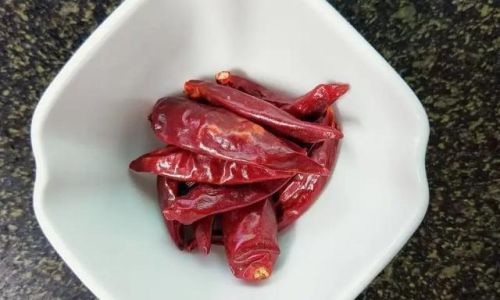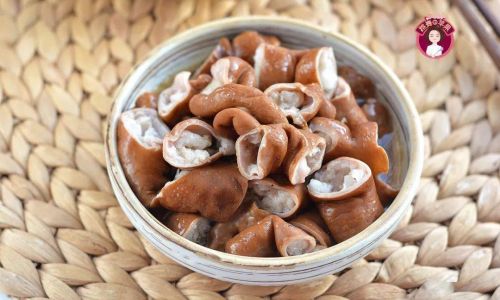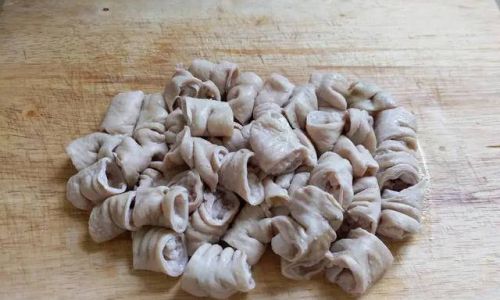Introduction
Large intestine, a cut of meat often overlooked in Western cuisine but revered in many global culinary traditions, has the potential to be a dish of unparalleled richness and depth when prepared correctly. Despite its reputation as a challenging ingredient, mastering its preparation can lead to a dish that is both tender and intensely flavorful, with a satisfying chew that borders on melt-in-the-mouth decadence. This article explores the techniques, ingredients, and cultural contexts that transform this humble ingredient into a culinary masterpiece. From braising to stir-frying, we delve into the secrets of achieving a dish that is肥又香 (fatty and aromatic) without the off-putting odors or textures that can plague inexperienced cooks.

Understanding the Ingredient: The Anatomy of Flavor
The large intestine, also known as the colon, is a muscular tube responsible for absorbing water and electrolytes from indigestible food matter. Its structure—thick walls of collagen-rich connective tissue and a layer of fat—makes it a prime candidate for slow-cooking methods that break down tough fibers into silky richness. The key to unlocking its potential lies in understanding how to balance its natural gaminess with aromatic seasonings and how to render its fat into a luxurious mouthfeel.
Selecting and Cleaning: The Foundation of Success
The journey to a perfect dish begins with sourcing the freshest possible intestine. Look for intestines that are pale pink, firm, and free of discoloration or strong odors. If purchasing from a butcher, request they clean and partially prepare the intestine for you, as this step can be time-consuming and requires precision.
Cleaning Process
- Rinse and Turn: Rinse the intestine under cold water, then use a dull knife or your fingers to gently scrape the interior surface, removing any residual debris or fat. Turn the intestine inside out (a process aided by running water or a chopstick) to access the inner lining.
- Scrub with Salt and Vinegar: Create a mixture of coarse salt and white vinegar. Rub this vigorously into both the interior and exterior of the intestine. The salt acts as an abrasive, while the vinegar neutralizes odors and helps dissolve mucous membranes.
- Soak and Rinse: Submerge the intestine in a bowl of cold water mixed with a few tablespoons of vinegar or lemon juice. Let it soak for 30–60 minutes, then drain and rinse thoroughly. Repeat this step if any lingering odor remains.
- Parboil: Bring a large pot of water to a rolling boil. Add a few slices of ginger, a splash of rice wine, and the intestine. Boil for 2–3 minutes, then discard the water. This step further removes impurities and tightens the intestine’s texture.
Braising: The Slow Burn to Perfection
Braising is the gold standard for cooking large intestine, as it transforms tough collagen into gelatin while infusing the meat with complex flavors.
Ingredients for Braising Liquid
- 2 lbs cleaned large intestine, cut into 4-inch segments
- 4 cups chicken or pork stock (or water)
- 1/4 cup soy sauce
- 1/4 cup Shaoxing wine (or dry sherry)
- 1/4 cup rock sugar (or brown sugar)
- 1 tbsp five-spice powder
- 3 star anise pods
- 1 cinnamon stick
- 6 garlic cloves, smashed
- 1 thumb-sized piece ginger, sliced
- 2 scallions, knotted
- 1 tbsp fermented black beans (rinsed)
- 1 tbsp chili paste (optional)
Method
- Sear the Intestine: Heat 2 tbsp oil in a heavy-bottomed pot over medium-high heat. Sear the intestine segments until lightly browned on all sides. This step caramelizes the exterior, adding depth.
- Sauté Aromatics: Reduce heat to medium. Add garlic, ginger, and scallions. Stir-fry until fragrant (1–2 minutes).
- Deglaze and Simmer: Pour in the Shaoxing wine, scraping up any browned bits. Add the soy sauce, sugar, five-spice powder, star anise, cinnamon, fermented black beans, and chili paste (if using). Stir to combine.
- Braise: Return the intestine to the pot. Add enough stock to cover the meat by 1 inch. Bring to a boil, then reduce to a gentle simmer. Cover and cook for 2–3 hours, or until the intestine is tender but not falling apart. Check periodically to ensure the liquid doesn’t reduce too much; add water if needed.
- Reduce and Glaze: Once tender, remove the lid and increase heat to medium-high. Simmer until the sauce thickens into a glossy glaze. Toss the intestine gently to coat.
Stir-Frying: Speed and Spice
For a quicker, more vibrant dish, stir-frying delivers bold flavors and contrasting textures. This method works best with pre-cooked intestine (boiled or braised).

Ingredients for Stir-Fry
- 1 lb pre-cooked large intestine, sliced into 1/2-inch rings
- 3 tbsp oil (peanut or vegetable)
- 4 garlic cloves, minced
- 1 tbsp ginger, minced
- 2 red chilies, sliced (adjust to taste)
- 1 bell pepper, thinly sliced
- 1 onion, sliced
- 2 tbsp oyster sauce
- 1 tbsp soy sauce
- 1 tsp sugar
- 1 tbsp Shaoxing wine
- 1 tsp sesame oil
- Fresh cilantro and sliced scallions for garnish
Method
- Prep the Intestine: Ensure the pre-cooked intestine is thoroughly drained and patted dry to prevent splattering.
- Stir-Fry Aromatics: Heat oil in a wok over high heat. Add garlic, ginger, and chilies. Stir-fry for 30 seconds until fragrant.
- Add Vegetables: Toss in bell pepper and onion. Stir-fry for 2–3 minutes until slightly softened.
- Sear the Intestine: Push the vegetables to the side and add the intestine slices. Let them sear undisturbed for 1–2 minutes to caramelize, then toss to combine.
- Sauce and Finish: Deglaze with Shaoxing wine, scraping the wok. Add oyster sauce, soy sauce, sugar, and a splash of water. Toss vigorously until the sauce coats everything. Drizzle with sesame oil and garnish with cilantro and scallions.
Marinating and Seasoning: Elevating the Basics
Marinating is a game-changer for infusing deeper flavor. A simple marinade of soy sauce, garlic, and five-spice powder can work wonders, but experimentation is key.
Advanced Marinade Recipe
- 1/4 cup soy sauce
- 2 tbsp honey
- 1 tbsp five-spice powder
- 1 tbsp grated ginger
- 1 tbsp minced garlic
- 1 tbsp rice vinegar
- 1 tsp sesame oil
Marinate the intestine for 4–6 hours (or overnight) before cooking. This step is particularly effective for grilled or pan-fried preparations.
Regional Variations: A Global Tour
- Chinese Cuisine: In Sichuan, “干锅肥肠” (Dry Pot Intestine) features intestine stir-fried with doubanjiang (chili bean paste), Sichuan pepper, and celery. In Guangdong, “卤水肥肠” (Marinated Intestine) is braised in a master stock until glossy and tender.
- Korean Cuisine: “Sundae” is a type of blood sausage stuffed with cellophane noodles, vegetables, and sometimes intestine, steamed and served with fermented condiments.
- Mexican Cuisine: “Chitterlings” (chitlins) are often simmered with onions, garlic, and chili powder, then fried until crispy.
Troubleshooting Common Issues

- Tough Texture: Overcooking can cause the intestine to become mushy, but undercooking leaves it rubbery. Aim for a tender yet slightly resilient texture.
- Off-Putting Odor: Ensure thorough cleaning and use aromatic ingredients like ginger, garlic, and star anise to mask residual gaminess.
- Greasy Finish: After braising, chill the intestine in the refrigerator. The fat will solidify on the surface, making it easy to skim off before reheating.
Serving Suggestions
- Rice Bowls: Pile braised intestine over steamed rice with a fried egg and pickled vegetables.
- Noodle Soups: Slice intestine thinly and add to ramen or pho for a luxurious topper.
- Appetizer Plates: Serve crispy fried intestine rings with a spicy dipping sauce.
- Hotpot: Add pre-cooked intestine to a simmering broth for a communal feast.
The Science of Texture: Collagen and Gelatin
The magic of cooking intestine lies in the transformation of collagen into gelatin. Collagen, a tough protein found in connective tissues, breaks down at 160–180°F (71–82°C) into gelatin, which imparts a silky texture. Slow, moist heat is essential for this process, which is why braising is so effective.
Pairing and Wine Suggestions
The richness of intestine pairs well with acidic wines like Riesling or Gewürztraminer, which cut through the fat. For beer, opt for a crisp lager or a malty amber ale. In non-alcoholic pairings, serve with tart citrus drinks or green tea.
Conclusion: Embracing the Unconventional
Large intestine, once mastered, offers a culinary experience that is both nostalgic and adventurous. Its ability to absorb flavors while retaining a satisfying chew makes it a canvas for creativity. Whether braised, stir-fried, or marinated, this ingredient rewards patience and attention to detail with a dish that is肥又香—a testament to the alchemy of traditional cooking techniques. So, the next time you encounter this often-maligned ingredient, remember: with the right approach, it can become the star of your table.






0 comments